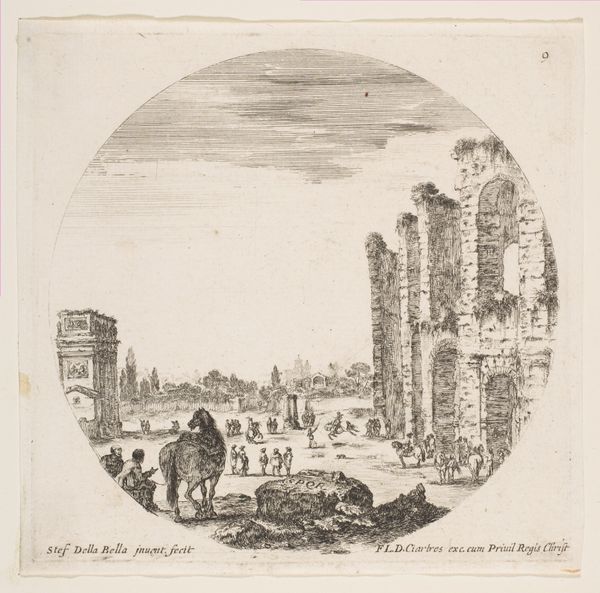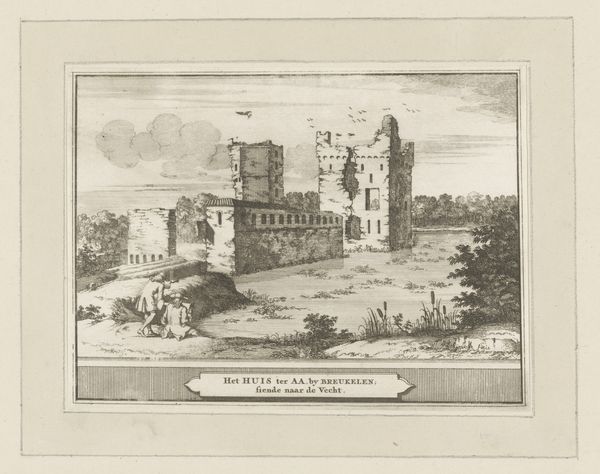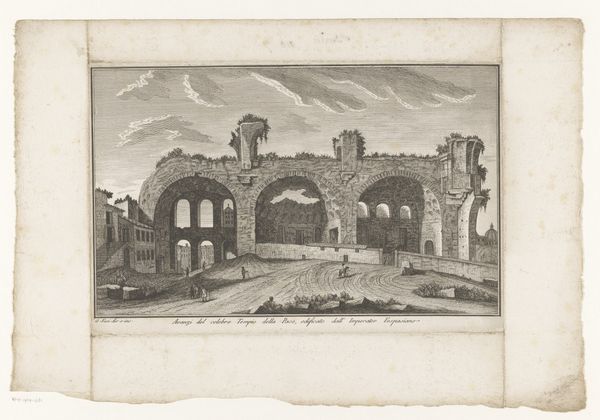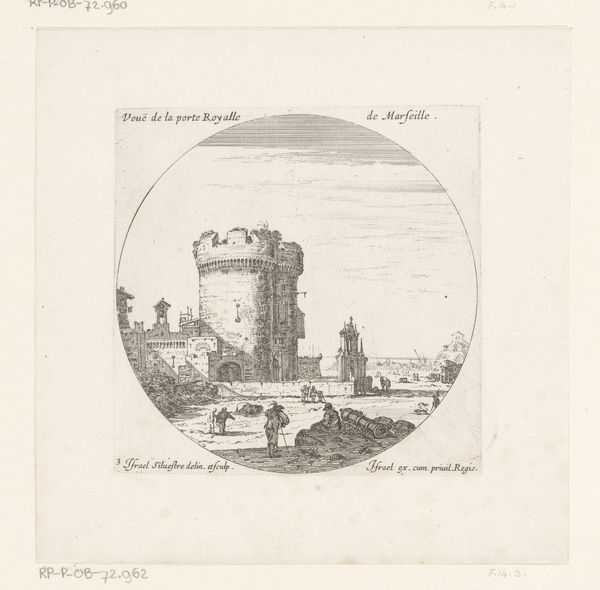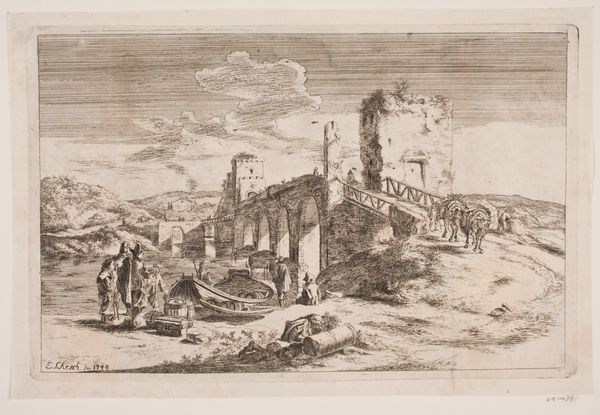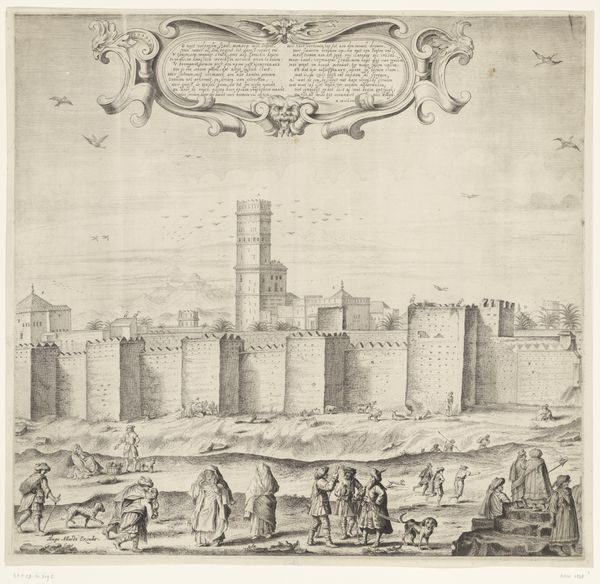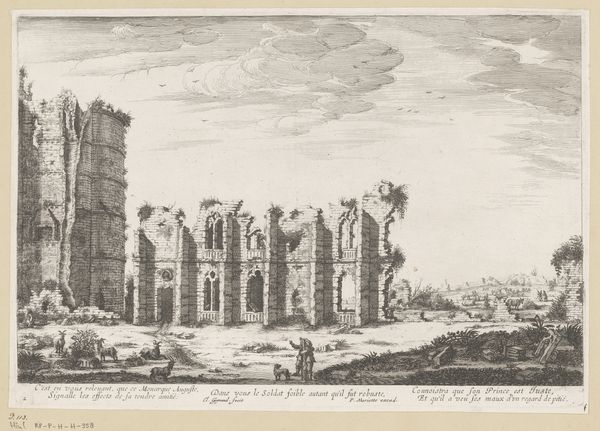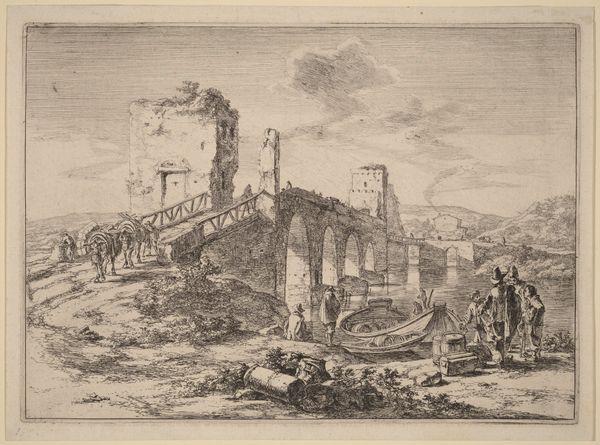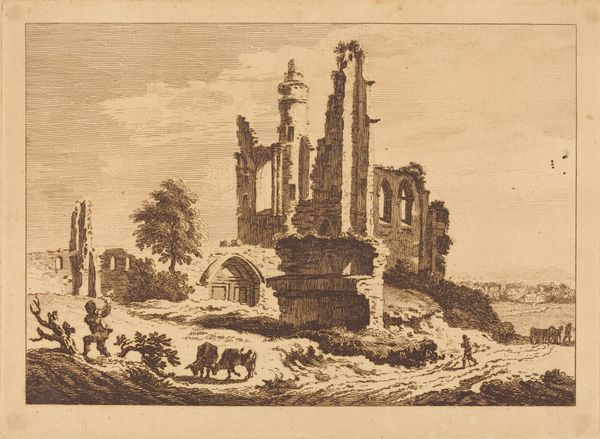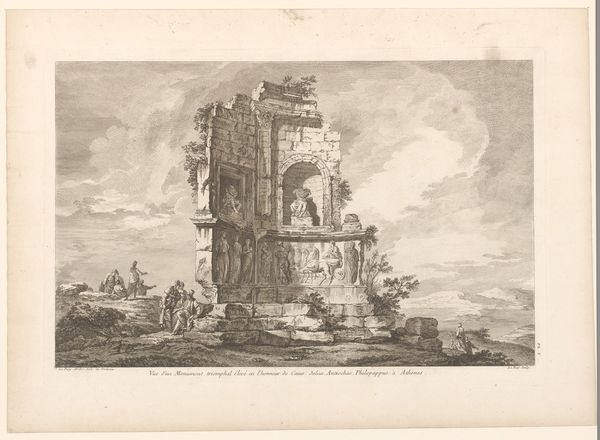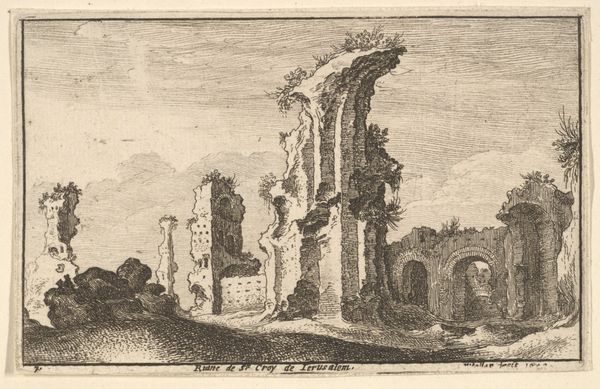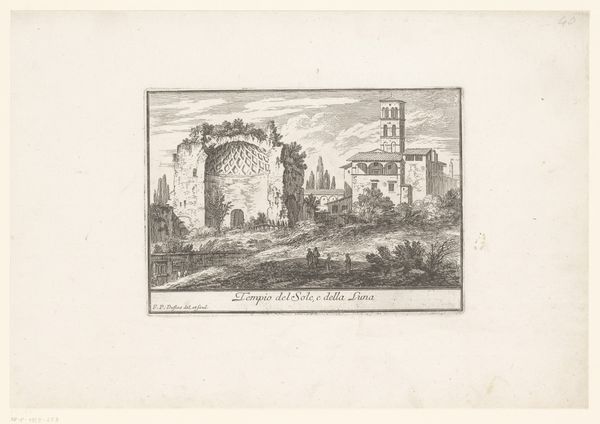
Plate 8: the Colosseum, two herds being directed towards the amphitheater in the foreground, from 'Roman landscapes and ruins' (Paysages et ruines de Rome) 1641 - 1651
0:00
0:00
drawing, print, etching
#
drawing
#
baroque
# print
#
etching
#
landscape
#
history-painting
#
italian-renaissance
Dimensions: Plate: 4 15/16 × 5 1/4 in. (12.5 × 13.4 cm) Sheet: 5 3/16 × 5 1/2 in. (13.1 × 13.9 cm)
Copyright: Public Domain
Curator: Here we have "Plate 8: the Colosseum, two herds being directed towards the amphitheater in the foreground, from 'Roman landscapes and ruins'," an etching created by Stefano della Bella sometime between 1641 and 1651. The work resides here at the Metropolitan Museum of Art. Editor: The first thing that strikes me is its composition – this dramatic ruin encircled like a vignette from another era. There’s a strong feeling of melancholy. Curator: Yes, Bella’s handling of light and shadow definitely enhances that feeling. Notice how the dense, cross-hatched lines in the Colosseum fragments create a palpable sense of decay and texture. Consider how that’s balanced with the more sparsely etched open space around the figures. Editor: That juxtaposition is powerful. It invites us to consider the lives that unfolded, both human and animal, around these structures – the everyday occurrences that went on despite the backdrop of Roman glory. And it prompts contemplation about those who experienced violence and oppression within those same architectural achievements. Curator: Indeed, Bella captures that duality through the juxtaposition of grand architectural ruin and intimate scenes. Consider the intricate network of lines building the structure and its sense of vertical rise. The lines almost seem to erode, crumbling and fading as you gaze upwards. Editor: Looking at these prints within the series ‘Roman landscapes and ruins,’ I think about the practice of wealthy Europeans taking the Grand Tour to Rome and witnessing this kind of disparity first hand – seeing the remnants of Roman power in tandem with the day to day experiences of the current population. It feels like Bella captured that complexity and inherent inequity. Curator: Well, however you interpret the content, its formal construction, with such dynamism created through lines of various weights, cannot be ignored. Editor: And to reflect on those tensions between a ruin's imposing presence and the vulnerability of the lives surrounding it seems appropriate for understanding history and its layered meanings. Thank you for providing more insight on that historical layering, which continues to echo even today.
Comments
No comments
Be the first to comment and join the conversation on the ultimate creative platform.
